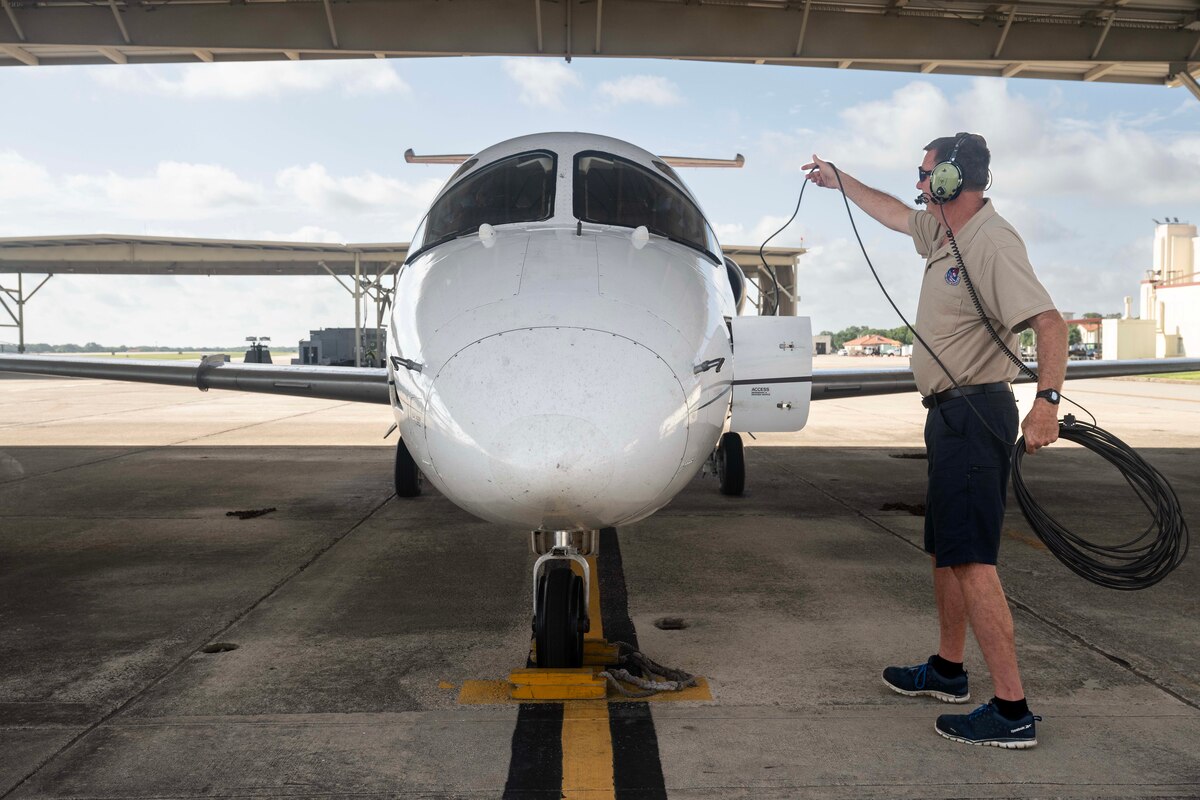The United States Air Force's T-1A Jayhawk made its final flight with the 99th Flying Training Squadron on July 15, soaring from Joint Base San Antonio-Randolph in Texas to Davis-Monthan Air Force Base in Arizona.
The journey marks the end of an era for the venerable trainer aircraft, which has been a cornerstone in the training of air mobility and combat systems officers for three decades.
"It was an honor to be a part of the final Red Tail T-1 flight," said Lt. Col. Dominique Haig, 99th Flying Training Squadron commander, who piloted the flight with Lt. Cols. Megan Pasierb and Christopher Puccia of the 39th Flying Training Squadron. "They've been a workhorse for the past 31 years preparing the instructor pilots and combat systems operators for the Mobility Air Force, Air Force Special Operations Command and Air Combat Command."
The T-1A Jayhawk, a military version of the Beechjet 400A, first entered service in the early 1990s. It has since played a crucial role in preparing thousands of pilots for service in various airframes, including the C-17 Globemaster III, KC-135 Stratotanker and C-130 Hercules. The aircraft's retirement is part of a broader transition to modernize the Air Force's training fleet and tactics.
As the Air Force shifts its training program from the T-1A to the advanced sixth-generation trainer T-7A Red Hawk. The retirement of the T-1A reflects ongoing efforts to enhance training efficiency and effectiveness. The T-7A, with its state-of-the-art systems and capabilities, is expected to provide more realistic and comprehensive training scenarios, better preparing Airmen for the demands of modern aerial operations.
In addition to modernizing training platforms, the Air Force is also integrating advanced simulation technologies, which allow for more flexible and varied training environments. These innovations aim to maintain the high standards of training excellence while adapting to the evolving needs of the Air Force.
"While we are closing one chapter in Air Force pilot training, we are gearing up for the next," Haig said. "The 99th FTS is making initial preparations for the reception of the T-7 Red Hawk. From renovating buildings to support T-7 training to T-7 academic courseware development and review. It's a heavy lift to stand up a new Mission Design Series."
Currently, Undergraduate Pilot Training instructs pilots assigned to mobility, special operations, and command, control and intelligence, surveillance and reconnaissance aircraft through the T-6 Texan II program followed by the simulator-based course Air Mobility Fundamentals-Simulator to teach crew and multi-engine fundamentals and competencies. The pilot would then go to a weapons system training course that is specific to the pilot's assigned operation aircraft.
The legacy of the T-1A Jayhawk will endure, not only in the memories of those who flew it but also in the continuing evolution of Air Force training. The last flight symbolizes a bridge between the past and the future, underscoring the Air Force's commitment to excellence and innovation in preparing the next generation of aviators.









